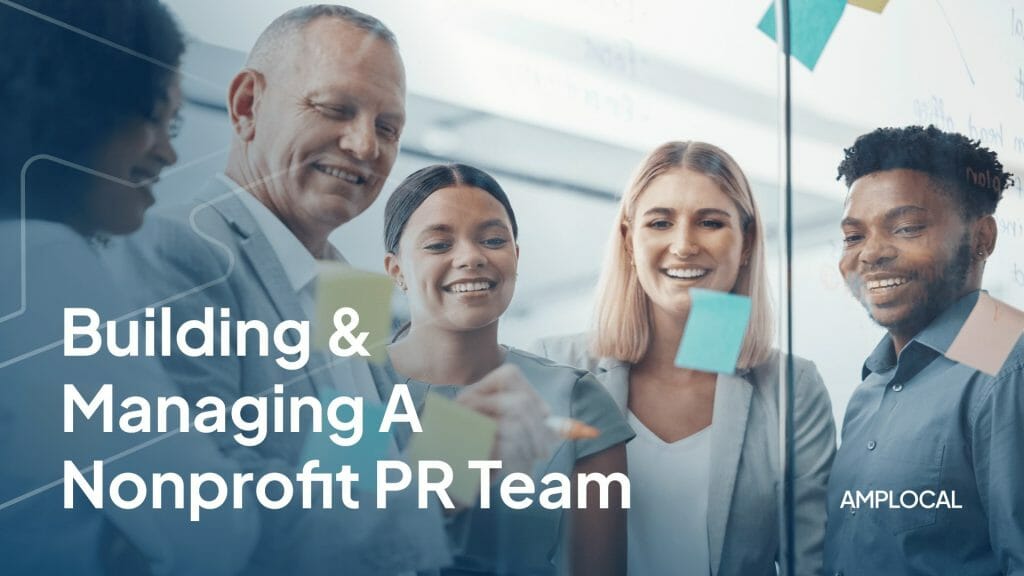Building and Managing a Nonprofit PR Team
In the intricate world of nonprofit organizations, the role of Public Relations (PR) has grown exponentially. It’s no longer just about sending out press releases or organizing events. Today, building and managing a nonprofit PR team is about crafting compelling narratives that resonate with the public, stakeholders, and the community at large. This article delves deep into the nuances of building and managing a nonprofit PR team, offering actionable insights and practical advice.
Historical Context and Modern-Day Relevance
In the past, the task of PR in nonprofits was often handled by a single individual or a small group, primarily focusing on media relations and fundraising events. Fast forward to today, and the scenario has dramatically changed. Building and managing a nonprofit PR team now involves a blend of traditional PR tactics with modern digital strategies. This shift is largely due to the rise of social media, influencer partnerships, and the importance of data-driven campaigns.
The Critical Choice: In-House Team or Outsourcing?
When building and managing a nonprofit PR team, one of the pivotal decisions is whether to form an in-house team or to outsource specific tasks to an agency. While an in-house team offers more control and a deeper alignment with the organization’s mission, it might be resource-intensive. Outsourcing, on the other hand, brings in expertise and a fresh perspective but might lack a deep-rooted understanding of the nonprofit’s core values and objectives.
Essential Roles in a Nonprofit PR Team
A robust nonprofit PR team typically comprises several key roles:
- PR Manager: This individual oversees the overall strategy, handles media relations, and is responsible for crisis management.
- Content Creator: They are charged with developing compelling stories, blog posts, and other content forms that resonate with the target audience.
- Social Media Manager: This role involves managing online communities, analyzing engagement metrics, and handling daily interactions with the public.
- Event Coordinator: From organizing galas to webinars, this individual ensures that each event aligns with the organization’s mission and objectives.
- Media Analyst: This role involves tracking media coverage and assessing its impact on the organization.
Continuous Training and Skill Development
The landscape of PR is ever-evolving. Hence, when building and managing a nonprofit PR team, continuous training becomes paramount. Regular training sessions, workshops, and exposure to the latest trends and tools in the PR domain are essential. This not only keeps the team updated but also ensures that the nonprofit remains at the forefront of PR strategies and tactics.
Harnessing Data for Decision-Making
In today’s digital era, data-driven decision-making is indispensable. Tools like Google Analytics offer insights into audience behavior, engagement metrics, and the overall performance of PR campaigns. By analyzing this data, nonprofits can tailor their strategies for maximum impact.
Challenges in Building and Managing
While the importance of a PR team is undeniable, nonprofits often face challenges such as limited budgets, high turnover rates, and staying updated with the rapidly evolving media landscape. However, with strategic planning, continuous learning, and a focus on the organization’s core objectives, these challenges can be effectively navigated.
The Importance of Data-Driven Decision-Making
In the modern PR landscape, data is king. According to a study by PR News, gone are the days when PR professionals relied solely on intuition and experience to make decisions. Today, data-driven decision-making is crucial for optimizing the effectiveness of your PR campaigns. Tools like Google Analytics, BuzzSumo, and Hootsuite offer valuable insights into audience behavior, engagement metrics, and campaign performance.”
Conclusion
Building and managing a nonprofit PR team is a nuanced and intricate process. However, with the right strategies, tools, and focus on continuous learning, nonprofits can not only build an effective PR team but also ensure that their message resonates far and wide. As the world of PR continues to evolve, the emphasis on building and managing a nonprofit PR team that is agile, skilled, and aligned with the organization’s mission becomes even more critical. In the past, the task of PR in nonprofits was often handled by a single individual or a small group, primarily focusing on media relations and fundraising events.
FAQs:
- Why is building and managing a nonprofit PR team essential in today’s landscape?
- In the digital age, PR is not just about press releases. It’s about crafting narratives, engaging with audiences on social platforms, and using data-driven strategies. A dedicated PR team ensures that a nonprofit’s message is effectively communicated.
- What are the key roles in a nonprofit PR team?
- A robust PR team typically includes a PR Manager, Content Creator, Social Media Manager, Event Coordinator, and Media Analyst. Each plays a unique role in shaping the organization’s public image.
- Should a nonprofit opt for an in-house PR team or outsource?
- Both options have their merits. An in-house team offers deeper alignment with the organization’s mission, while outsourcing brings expertise. A hybrid approach, keeping strategic functions in-house and outsourcing specialized tasks, can often be effective.
- How can data-driven decision-making benefit a nonprofit PR strategy?
- Data-driven decision-making, using tools like Google Analytics, provides insights into audience behavior and campaign performance. This allows nonprofits to tailor their strategies for maximum impact.
- What challenges might nonprofits face when building and managing a PR team?
- Nonprofits often grapple with limited budgets, high turnover rates, and the need to stay updated with the evolving media landscape. Strategic planning and continuous learning can help navigate these challenges.




